Local conservation amid a global problem
Greetings from Denver, Colorado! I unfortunately had to return home from my study abroad experience earlier than expected. However, I still have many insights regarding Ecuadorian environmental attitudes that I am eager to share.
Throughout my time in San Cristóbal, Galápagos, I was struck by the abundance of signs, murals, and benches that implored me to help conserve the island. I believe these visual reminders reflect how aware Galapagueños are of conservation efforts. They recognize that they live in a unique ecosystem, and feel responsible for its preservation. In conversations I had with locals about conservation, many used the phrase “cuidar lo nuestro” (“take care of what’s ours”), echoing the narrative that has been promoted and instilled by the government, national park, and conservation NGOs over the last few decades. Although conservation efforts may impede local practices and livelihoods, I was amazed to find that almost everyone supports conservation as a concept. This may be partly attributable to the island’s economic reliance on tourism, which depends on the maintenance of a “pristine” Galápagos.
Despite a strong local conservation ethic, many conservation challenges remain in the Galápagos. In particular, plastic pollution is a growing threat to the islands. While much of the plastic that litters beaches was transported long distances by ocean currents, plastic waste is also generated on the islands, by tourists and locals alike. Though there are some efforts in place to reduce single-use plastics, such as bans on plastic straws, items like plastic water bottles and plastic bags are still commonplace. I want to qualify this, however, by noting that San Cristóbal is one of the cleanest places I have ever been, with minimal litter compared to mainland Ecuador and the United States (this is, of course, a small community). Through this series of photos, I wish to explore some of the paradoxes of conservation present on the Galápagos Islands.

This is one of many conservation-related murals found in San Cristóbal. The majority (including this one) were done by local schools. This mural depicts crabs with to-go containers in the place of their shells. To-go containers at most restaurants in Ecuador look exactly like this, and would be immediately identifiable to anyone from Ecuador. The caption says, “plastics take thousands of years to degrade.”

A mural outside of a school. The top line reads: “You see the difference, they don’t!”. The text at the bottom: “Turtles confuse plastic bags with jellyfish and die of suffocation.” Notice that there are a few pieces of trash in the bottom left hand corner.
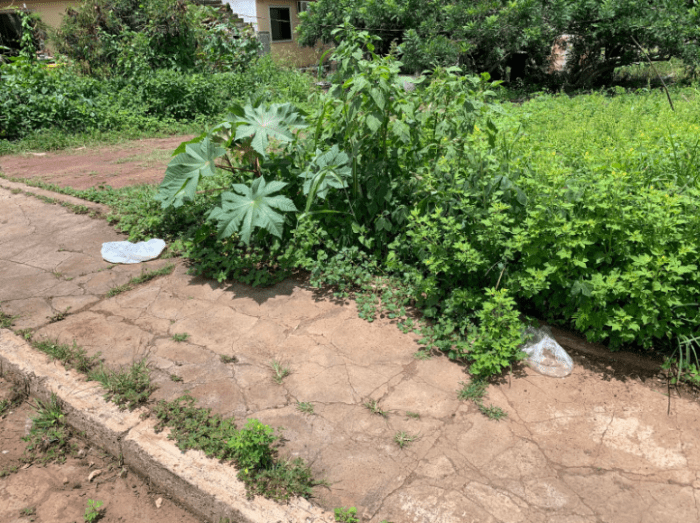
Despite efforts to raise awareness about plastic pollution, such as the mural with the turtle directly above, it is not uncommon to see discarded plastic bags along the side of the road.
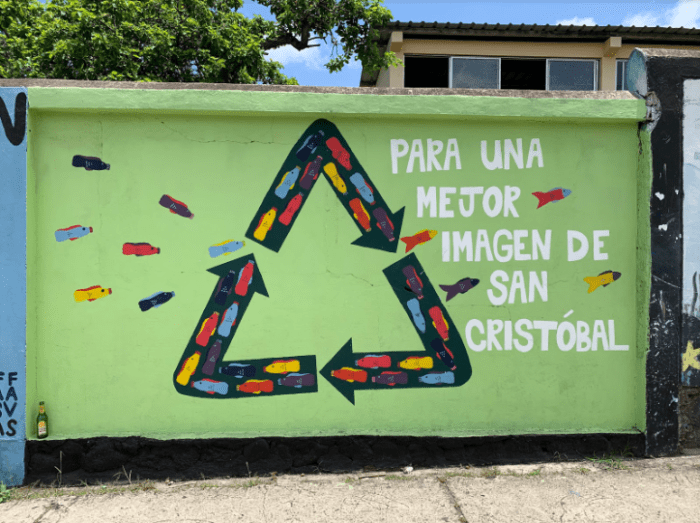
This mural encourages people to recycle plastic bottles “for a better image of San Cristóbal.” Ironically, there is a discarded beer bottle in the lower left hand corner.
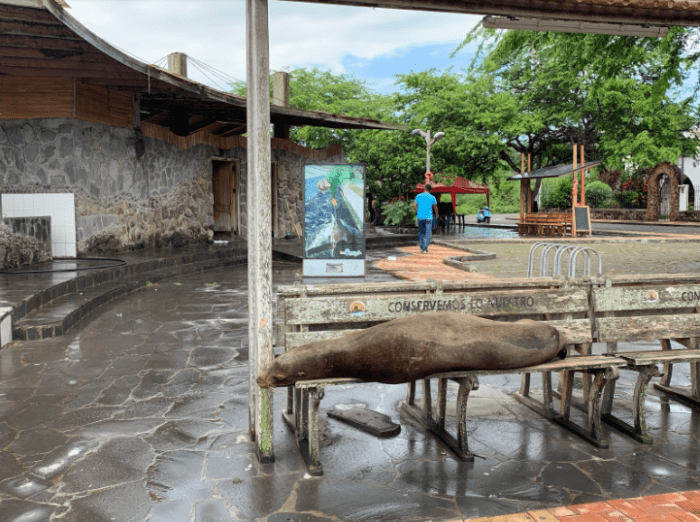
Every bench provided by the municipal government is inscribed with the words “conservemos lo nuestro” (“let’s conserve what’s ours”). There are hundreds of benches just like this all over San Cristóbal (and they are often used by sea lions).
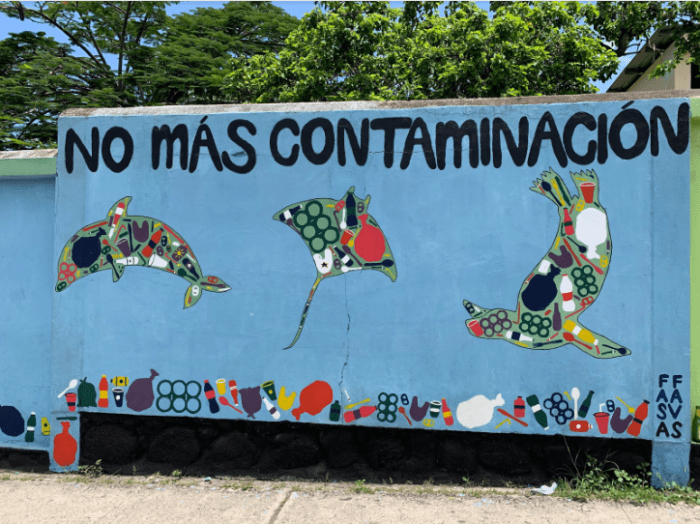
This mural depicts three iconic Galápagos marine species – a dolphin, a ray, and a sea lion – filled with plastic. The text at the top reads: “No more pollution.” There is a piece of litter in the lower right hand corner.
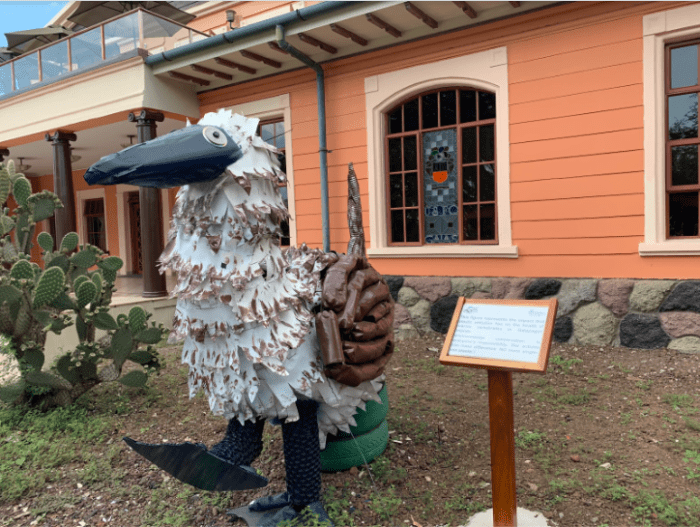
This is a blue-footed boobie (an iconic Galápagos bird) made from trash, located outside of my university campus. Tourists took photos with this sculpture all the time, which I found really interesting. I was also struck by the fact that the sign (found below) is only in English, not the local Spanish.

I was troubled by the fact that this sign was only in English, thereby making it inaccessible to most Galapagueños. Perhaps this was an effort to raise awareness of plastic pollution among tourists, however if “environmental conservation is everyone’s responsibility,” it needs to be inclusive.
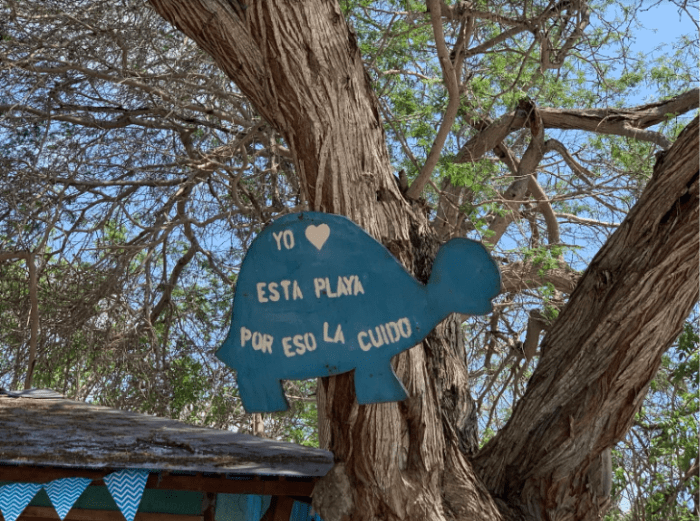
A sign found on Playa Mann (see below), the beach in front of my university campus. The sign reads: “I love this beach, that’s why I take care of it.” This is easily the most heavily-trafficked beach in San Cristóbal, given its central location and good swimming conditions.

This is an image of Playa Mann at sunset, complete with sea lions. Although Playa Mann may be visited by hundreds of people a day, it is very well-maintained. In this case, the sign shown above seems to be working! There is much less trash found on the beach than might be expected given its popularity.
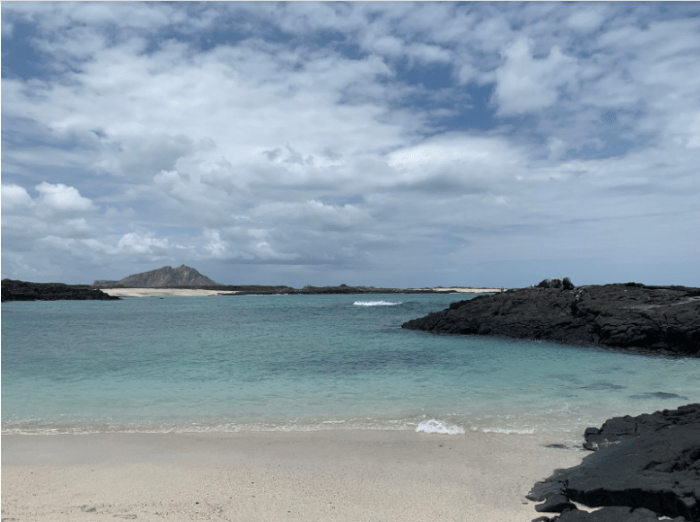
This is a photo I took at Punta Pucuna, a beautiful, remote beach in San Cristóbal. Even at pristine sites like this, which can only be reached via a few authorized boats, it is possible to find plastics and other litter on the beach. Unfortunately, this shows that the problem of plastic pollution is much bigger than the Galápagos. Even if they ban every form of single-use plastic from the islands, pollution from other sources, including commercial fishing boats and distant continents, will still make its way to the Galápagos.